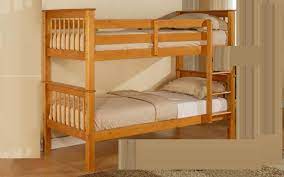Introduction
Child safety is of utmost importance, especially when it comes to products designed for their comfort and rest. The European Committee for Standardization (CEN) introduced the EN 716-1:2017 standard to establish safety requirements for children’s cots and folding cots intended for domestic use.
This standard covers a range of safety aspects, including dimensions, materials used, and structural requirements, to ensure that these products provide a safe environment for children to sleep and play.
Scope of EN 716-1:2017
The EN 716-1:2017 standard applies to cots and folding cots intended for children who weigh up to 22 kg, typically from birth to approximately 3 years of age. The standard encompasses various safety aspects that manufacturers, retailers, and parents must consider while dealing with these products.
1. Safety Requirements for Cots and Folding Cots
1.1 Cot Construction and Design
The construction and design of cots and folding cots must adhere to specific guidelines set forth in the EN 716-1:2017 standard. Manufacturers must ensure that the cot’s sides are high enough to prevent the child from climbing out while also allowing proper ventilation.
Additionally, the distance between the slats should be appropriate to avoid any entrapment hazards for the child’s limbs or head. The materials used in the cot’s construction must be non-toxic and durable to withstand regular use.
1.2 Mattress Requirements
The standard also addresses the essential aspects of the mattress used in children’s cots. The mattress should fit the cot snugly to avoid any gaps that might lead to entrapment. It should be firm, flat, and smooth to provide optimal support to the child’s developing body.
Moreover, the mattress must be free from harmful substances, as babies are prone to allergies and skin sensitivities.
1.3 Stability and Durability
Stability and durability are crucial factors in ensuring the safety of cots and folding cots. The EN 716-1:2017 standard specifies that these products should be stable and not prone to tipping over. It is vital to follow the manufacturer’s instructions for assembly carefully to maintain stability.
1.4 Hazardous Substances
The standard emphasizes that children’s cots and folding cots should not contain any hazardous substances such as lead, phthalates, or heavy metals. These harmful chemicals can pose severe health risks to infants and young children.
Manufacturers must adhere to strict guidelines to ensure their products are free from such dangerous substances.
1.5 Entanglement and Choking Hazards
The EN 716-1:2017 standard highlights the importance of eliminating any entanglement or choking hazards. Cords, strings, or decorative elements should not be present in or around the cot that could potentially harm the child.
1.6 Warning Labels and Instructions
Clear and concise warning labels and assembly instructions are critical in guiding parents and caregivers on the safe use of children’s cots and folding cots. These labels should provide information about weight limits, proper assembly, and safety precautions.
2. Compliance and Certification
To ensure that cots and folding cots meet the safety requirements of the EN 716-1:2017 standard, manufacturers must subject their products to rigorous testing by accredited laboratories. Once a product complies with the standard, it can be affixed with the CE marking, indicating that it meets the necessary safety requirements for sale within the European Economic Area.
3. Importance of EN 716-1:2017 Compliance
Compliance with the EN 716-1:2017 standard is not just a legal requirement but also a moral obligation for manufacturers and retailers. By adhering to these safety regulations, they demonstrate their commitment to providing safe and secure products for children.
For parents and caregivers, choosing cots and folding cots that comply with this standard provides peace of mind, knowing that their child will be resting in a safe environment.
Conclusion
The EN 716-1:2017 standard plays a vital role in ensuring the safety and well-being of children using cots and folding cots. From cot construction to mattress requirements and hazardous substances, every aspect is meticulously addressed to minimize potential risks.








